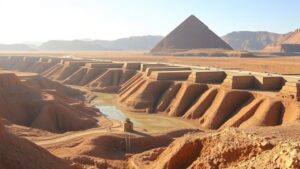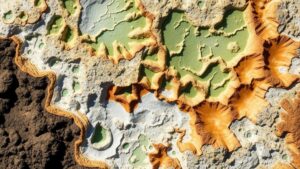Understanding Stream Dynamics to Predict Gold Accumulation Patterns
Understanding Stream Dynamics to Predict Gold Accumulation Patterns
The quest for gold has driven humanitys ingenuity and exploration for centuries. Understanding the dynamics of streams–especially how they interact with physical geography–plays a crucial role in predicting where gold might accumulate. This article delves into the principles of stream dynamics, the physical processes influencing gold deposits, and the methods used to predict these patterns effectively.
Stream Dynamics: A Comprehensive Overview
Stream dynamics refer to the physical processes that govern the flow of water in rivers and streams. Key concepts include:
- Flow Velocity: The speed at which water flows, which influences erosion and sediment transport.
- Streambed Composition: The materials that comprise the streambed, affecting how sediment settles.
- Hydraulic Geometry: The relationship between flow depth, width, and velocity within a channel.
- Erosional and Depositional Processes: The mechanisms through which materials are removed from or added to the stream system.
How Gold Accumulates in Stream Environments
Gold, being a dense metal, tends to settle at specific locations within a stream based on its physical properties. Key factors that influence gold accumulation include:
- Gravity and Density: Golds high density relative to most other materials causes it to settle rapidly when water flow changes.
- Hydraulic Sorting: As stream velocity changes due to various factors such as bends or obstructions, gold particles are sorted based on size and weight.
- Stream Velocity: Lower flow conditions allow heavy materials, including gold, to settle more effectively.
Predictive Techniques in Gold Prospecting
Various techniques can be employed to predict where gold may be found in stream environments. These include traditional prospecting methods and modern technological applications.
Traditional Methods
Before advancements in technology, prospectors relied on hands-on methods such as:
- Panning: A technique that involves swirling water and sediment in a pan to allow gold to settle at the bottom.
- Classifying Materials: Separating sediment by size can help identify potential gold-bearing materials.
Modern Techniques
The advent of technology has introduced more sophisticated methods, including:
- Geographic Information Systems (GIS): Utilizing GIS allows for the analysis of stream dynamics and sediment patterns over large areas.
- 3D Modeling: This helps visualize subsurface geology, providing insights into potential gold deposition zones.
- Hydraulic and Environmental Modeling: Advanced simulations predict how changes in stream flow impact sediment transport dynamics.
Case Study: The Klondike Gold Rush
During the Klondike Gold Rush in the late 1890s, miners utilized basic principles of stream dynamics to locate gold deposits. identified substantial gold concentrations in areas where streams slowed down due to bends and natural obstructions. For example, the discovery of gold along Bonanza Creek was attributed to the stream dynamics that allowed heavier particles to settle at lower velocities.
Conclusion
Understanding stream dynamics is essential for predicting gold accumulation patterns effectively. By analyzing flow velocity, sediment composition, and erosional processes, both traditional and modern techniques can be employed to enhance gold prospecting efforts. Whether utilizing historical insights from the Klondike Gold Rush or applying cutting-edge GIS technologies, knowledge in stream dynamics offers crucial advantages to prospectors. As techniques evolve, refining our predictive models will only become more effective.
Actionable Takeaways
- Study the physical geography of areas with historical gold deposits.
- Apply both traditional and modern prospecting techniques for a comprehensive approach.
- Use technology, such as GIS and 3D modeling, to enhance predictive accuracy.

